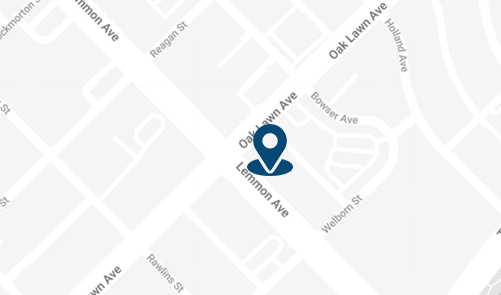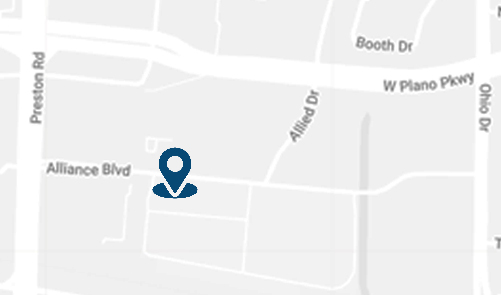By: Dr. Dev Batra | 01.29.23
Venous disease is a progressive condition. It starts with damage to one or more of your veins — the conduits that return deoxygenated blood from the body’s tissues to the heart. If it is not treated, it can lead to significant health problems, including skin ulcers, abscesses, bone infections, and even lower-limb amputation.
At Texas Vascular Institute, interventional radiologist Dr. Dev Batra and our team treat all manner of vein diseases at our offices in Dallas and Hurst, Texas.
Venous stasis dermatitis is a stage of vein disease that’s not as well known as some earlier forms — like varicose veins — so our team has put together this guide to help you understand what’s happening with your circulatory system and the four primary ways in which your skin can be affected.

Chronic venous insufficiency (CVI) and the stages of vein disease
On its return trip to your heart, blood has to flow against the pull of gravity. To accomplish this, your body uses two mechanisms. First, the muscles in the calf (lower leg) and thigh (upper leg) contract, forcing the blood in an upward direction. Second, each vein contains one-way valves that close after the blood passes through.
If the vein walls weaken, though, say from an injury or high blood pressure, it can damage the valves. Unable to close, the blood is free to flow backward and pool around the damaged area. That is referred to as chronic venous insufficiency because blood flow is sluggish and inadequate to properly nourish the body’s tissues.
When superficial veins swell with blood, they cause colored, ropy protrusions, usually on the legs — varicose veins. Sometimes they’re merely an aesthetic issue, but sometimes they cause swelling, itching, and burning.
The sluggish flow may even lead to blood clots in the deep veins, known as deep vein thrombosis (DVT). If the clot breaks off, it can travel through the bloodstream to the lungs, blocking the airway — a life-threatening emergency.
If you don’t treat the varicose veins, you may experience painful edema (leg swelling), where the veins leak fluid into the surrounding tissue. And if you don’t address the edema, it can lead to venous stasis dermatitis, the stage of vein disease that changes the color and appearance of the skin.

4 ways venous stasis dermatitis affects your skin
The primary way venous stasis dermatitis affects the skin is in coloration. As the edema progresses, you may start to notice orange-brown spots appearing on your lower legs and ankles. Sometimes called cayenne pepper spots, these develop when pressure from the swelling causes small capillaries to burst.
As the capillaries burst, the discoloration turns red or brown, as hemosiderin, a pigment formed from the breakdown of hemoglobin, builds up in the tissues. You may also notice three other changes:
- Shiny skin
- Scaly skin
- Thickened skin
The risk of leaving venous stasis dermatitis untreated is that the edema can cause slow-healing open sores — venous ulcers — to form on the lower legs and tops of the feet. These ulcers can become infected, which can lead to cellulitis, gangrene, and even lower-limb amputation, especially among people with diabetes.
Treatments for venous stasis dermatitis
At Texas Vascular Institute, we offer minimally invasive treatments to eliminate your diseased veins. These include:
VenaSeal™
VenaSeal is a specially formulated injectable medical adhesive that seals the diseased veins. Blood is then shunted to nearby healthy veins.
ClosureFast™
ClosureFast uses radiofrequency (RF) energy to ablate the diseased vein. When the energy is directed at the vein, it causes the walls to collapse, and blood is rerouted.
Ultrasound-guided foam sclerotherapy
During traditional sclerotherapy, Dr. Batra injects an irritant, often a saline solution, into the diseased vein. It irritates the lining and causes the entire vein to scar and collapse. Since most sclerosing agents are liquids, it can be difficult to achieve an even distribution within the veins, so Dr. Batra mixes it with foam. He also mixes a gas into the sclerosing agent to serve as a marker.
The gas can be seen with ultrasound imaging, allowing our team to target a specific part of the vein.
If you have swollen, painful, and discolored legs, you may have venous stasis dermatitis, which requires prompt medical attention. Contact Texas Vascular Institute as soon as possible to schedule a consultation with Dr. Batra. Call us at either location or book your appointment online.
Read more blogs
Why Are My Veins Blue?
Wondering why your veins look blue under your skin? Learn the science behind vein color, how light affects what you see, and what it means for your health.
10 Warning Signs Of Poor Circulation And How To Fix It
Have you ever noticed your feet always feel cold, or your legs cramp up when walking? These could be warning signs of poor circulation, a condition that can impact your daily life and overall health.
Leg Pain Keeping You Up at Night?
Are restless, aching legs keeping you from a good night’s sleep? Nighttime leg pain can interfere with your rest, affecting your health, mood, and ability to take on daily activities. While there can be various causes, nighttime leg pain - especially when accompanied by feelings of heaviness, throbbing, or itchiness - could point to a vein issue.
WHAT OUR PATIENTS
have to say
Texas Vascular Institute always appreciates feedback from our valued patients. To date, we’re thrilled to have collected 378 reviews with an average rating of 5 out of 5 stars. Please read what others are saying about Texas Vascular Institute below, and as always, we would love to collect your feedback.
Leave a Review
Amazing Practice
I'm very particular with my Healthcare and tend to be cautious with referrals to specialists. This office is amazing from the first point of contact. Their staff are friendly, professional and highly knowledgeable. Then the Dr is just as amazing as his staff, absolutely brilliant. Office manager Jessica has this office running like a well oiled machine and does so with a smile, an air of confidence, kindness and professionalism. Love this practice!!
- Richard G.

Beyond Thankful
Dr Batra and his staff are amazing! We are so grateful to have found him. Everyone is so kind and so caring and Dr Batra explains everything so well and does procedures with excellence. Beyond thankful to be under their care!!!
- Bitsy P.

Gold Standard
This is a gold standard for how a medical practice should be run. I was promptly seen at my scheduled time, my ultrasound was thorough and I received plenty of attention and care from the staff and Dr.Batra.
- Weronika L.
INSURANCE
We accept most major insurance plans. Please contact the medical office for all insurance related questions.









8330 Meadow Rd #100
Dallas, TX 75231
For Appointments: 972-798-4710
General Inquiries: 972-646-8346

809 West Harwood Rd, Suite 101,
Hurst, TX 76054
For Appointments: 972-798-4710
General Inquiries: 972-646-8346

4716 Alliance Blvd Suite #180,
Plano, TX 75093
For Appointments: 972-798-4710
General Inquiries: 972-646-8346

